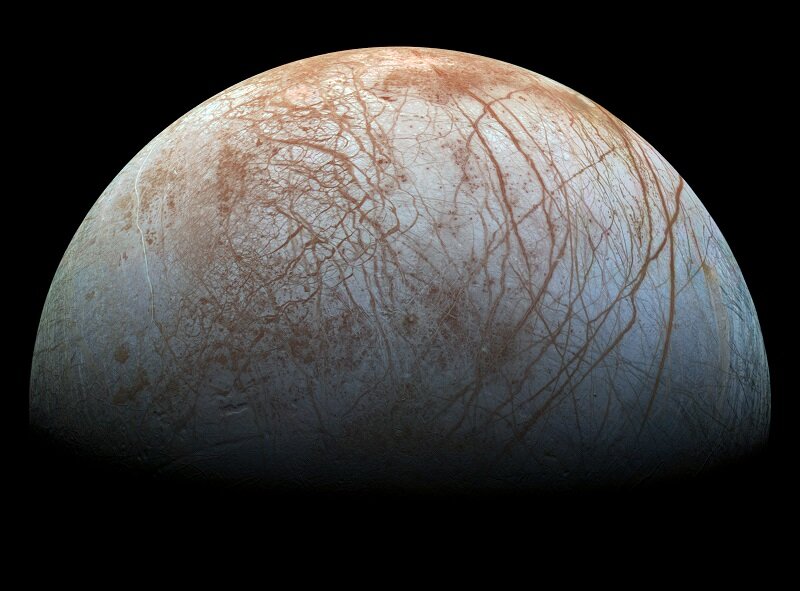Last updated July 24, 2018 at 11:44 am
Differences in the radiation hitting Jupiter’s moon may mean we literally only need to scratch the surface.

Whether it’s on an exoplanet, or within our own solar system, recent research is revealing more and more potential for life to exist off Earth.
One of the key places to look is Jupiter’s moon Europa.
Below its thick crust of ice is a liquid ocean where life could potentially thrive. And if life exists, it should leave a biosignature in the form of amino acids – the building blocks of life.
New research from NASA JPL suggests we might not need to break through that crust to investigate, we might be able to find it by literally scratching the surface.
In some areas we might be able to find amino acids within a centimetre of the surface.
“Amino acids are not strictly a sign of life but they could serve as one of the simplest molecules that qualifies as a potential biosignature,” write the scientists.
With a lander mission to Europa on the cards, the study has indicated where we would maximise our chances of a discovery that would forever change our view of ourselves.
Radiation scours the surface
While life could be thriving in the ocean depths, Europa is bombarded by harsh radiation which quickly erases any trace of biological material on its surface.
This has led to the suggestion that a lander would need to drill several metres into Europa’s hard ice crust to obtain recognisable organic samples – something that would vastly increase the difficulty, and cost, of the mission.
The new study, however, examined the radiation bombardment and found that the middle to high latitudes of Europa received far less irradiation than others, while the equatorial regions received the most.
The difference is due to a complex ballet of charged particles and the interaction between Europa and Jupiter’s magnetic field. Some particles are twisted, directed and diverted, while others (mainly electrons) are heavily influenced by drift from the magnetic field’s rotation.
The end result is a swirling, uneven pattern of radiation striking the moon’s surface.
How do amino acids fare?
The researchers then turned to see how the different amounts of radiation in each area of Europa would affect glycine, alanine and phenylalanine – three amino acids which are the basis of proteins for all known living organisms.
They found that at least 10 per cent of amino acids would survive at a depth of 10 centimetres all over the planet, including in the most-irradiated equatorial regions, for up to 10 million years.
In the least irradiated areas, they found that 10% would survive just 0.6cm below the surface.
The authors admit this could all change if meteorite impacts have disturbed the surface, a question that still remains.
The upcoming Europa Clipper mission, which will sail past Europa and image its surface at one metre resolution, may reveal some of the answers. However, to really get a clear idea of whether the biosignatures exist on Europa, we’ll need to wait for the proposed, but not yet funded, lander mission.
With this research suggesting that certain regions could be more attractive targets than others, the detection of the building blocks of life, and the potential of life itself within our solar system might be closer than ever.
The research has been published in Nature Astronomy.





























































































































































































































































































































































































































































































